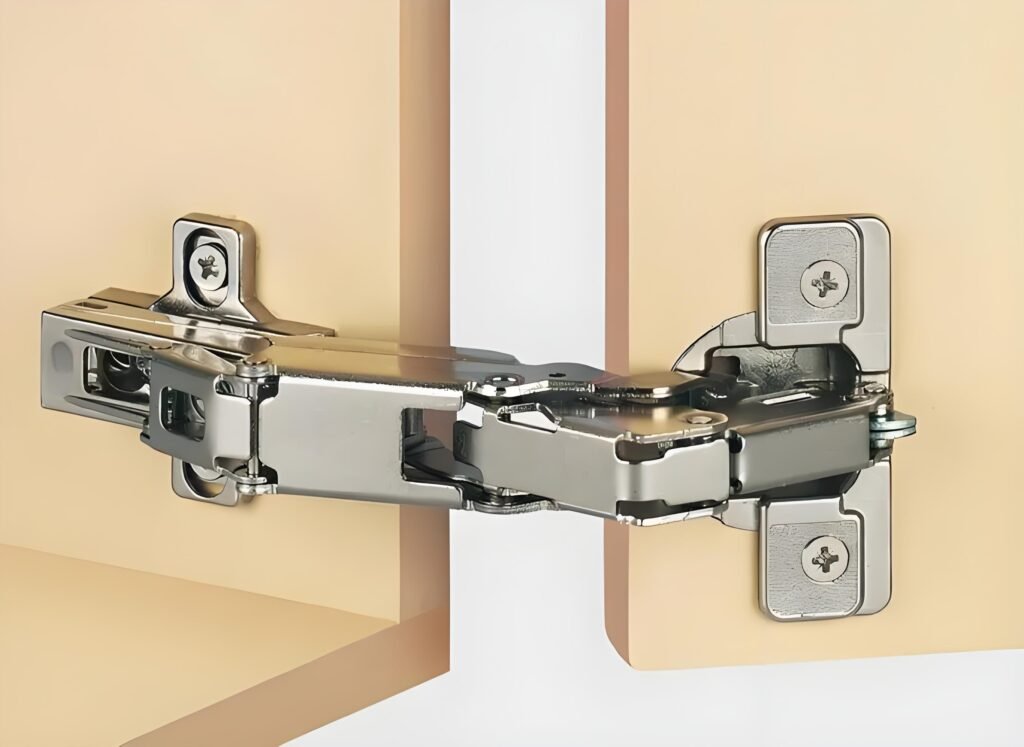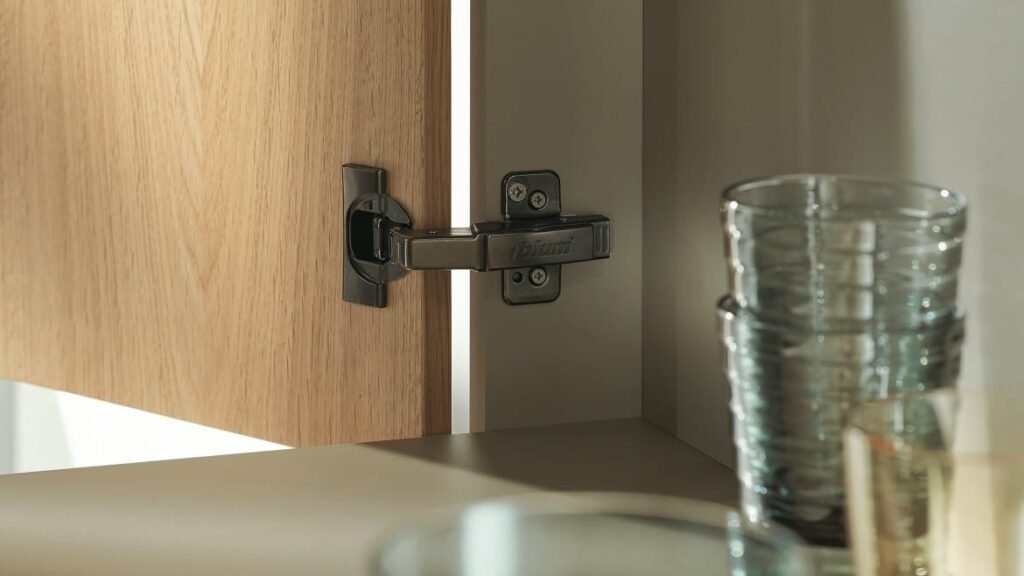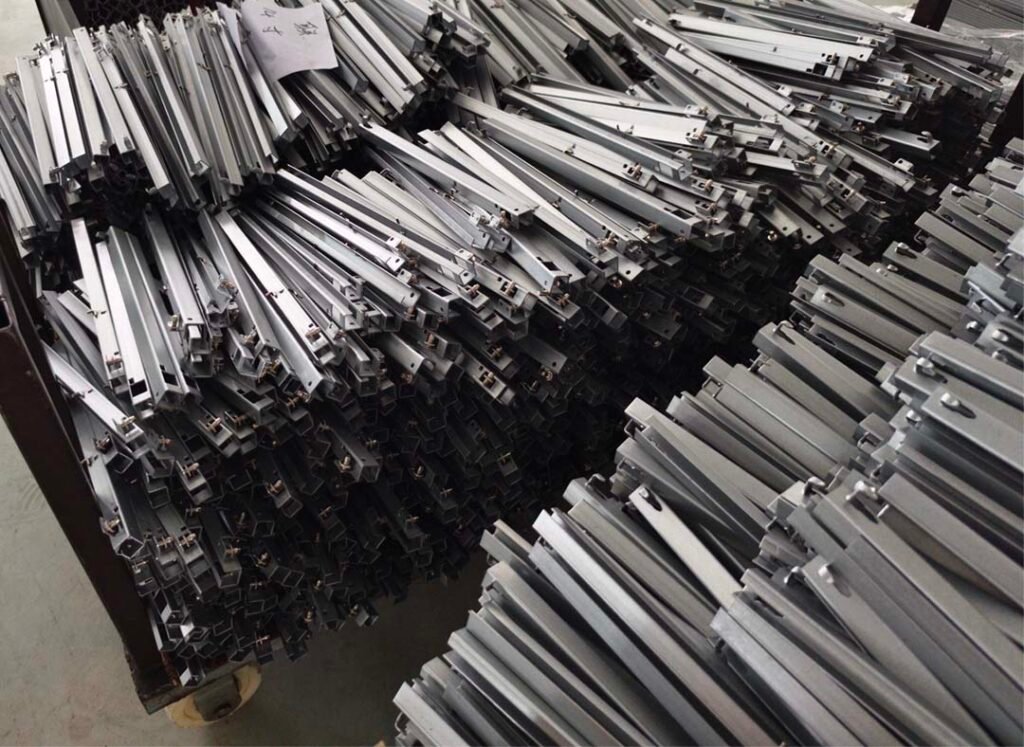
ø40 Removable Soft Close Hinges - UT207
Inset(C=17)
Main Material: Stainless steel 201
Finish: Nickel Plated
Opening hinge: 95°
Dia. of hinge cup: 40mm
Depth of hinge cup: 13mm
Product thickness: 1.0mm/1.2mm
Door (K) dimension: 3-11mm
Door thickness: 20-28mm
Optional hinge cylinder, cup head, and thickness.
Application Segment
Cabinet Doors, Wardrobe Doors


Our Services

MOQ Offered
We provide flexible minimum order quantities, allowing you to start small and scale up as needed.

Large Inventory
Ensuring Ample Stock for Immediate Shipment, Eliminating Wait Times for Production.

Complete Specifications
We refine various specifications of hinges according to different usage scenarios.
AOLISHENG manufactures soft close hinges that meet standards, offering customized services and solutions to help your business succeed.
Why Choose AOLISHENG
Rich Experience
With years of soft close hinges production experience, we have a team of professionals specializing in hinge design, manufacturing, and management.
Leading Production Capacity
We possess CNC machining for heavy-duty applications, wire-cutting machines, automated balancing, pressing equipment, and electroplating production lines for hinge manufacturing.
Quality Assurance
All hinges undergo over 48 hours of salt spray testing and are subjected to more than 80,000 cycles of open-close testing with appropriate door weights, meeting the quality standards of QB/T2189-1995.
Mass Production Capability
With over 10,000 square meters of production facilities and thousands of square meters dedicated to electroplating workshops, we ensure a large-scale supply of hinges.
We Look Forward To Your Contact
AOLISHENG is your trusted global partner for high-quality drawer slide and hinges production, with strategic factories worldwide and professional local service teams. Partnering with AOLISHENG ensures efficient project delivery, robust supply chains, expert technical support, and a thriving customer base.
FAQ
Do you need 2 soft close hinges per door?
Typically, each door requires two soft close hinges to ensure that the door closes smoothly and evenly. Here are some reasons why two soft close hinges are usually required:
1. Even support
Door stability: Two hinges provide even support to prevent the door from twisting or misaligning due to excessive pressure on one side during closing.
Weight distribution: Two hinges can better share the weight of the door, reducing the burden on a single hinge.
2. Functionality
Smooth closing: Two soft close hinges ensure a smoother closing process and better cushioning.
Noise reduction: Using two hinges ensures that the entire door surface is cushioned, reducing noise when closing.
3. Scope of application
Door size and weight: For doors of standard size and weight, two soft close hinges are usually sufficient. For larger or heavier doors, more hinges may be used to provide additional support.
Special designs: For some specially designed doors or when additional stability is required, more hinges may be used.
4. Installation considerations
Symmetrical installation: Make sure the two hinges are symmetrically positioned to ensure smooth opening and closing of the door.
Correct Adjustment: Once installed, the hinge cushion settings need to be adjusted to ensure the door closes as expected.
Summary
In most cases, two soft close hinges are required per door to ensure the door closes smoothly and evenly. Depending on the size, weight, and design requirements of the door, more hinges may be required for additional support.
Are soft close hinges universal?
Soft close hinges are not completely “universal” because their suitability depends on several factors, including the design of the hinge, the size and weight of the door, and the installation requirements. Here are some detailed explanations on whether soft close hinges are “universal”:
1. Type and design
Standardized dimensions: While many soft close hinges meet industry-standard dimensions and mounting hole spacing, not all hinges are suitable for all types of doors. Hinges of different brands and models may have different installation requirements and dimensions.
Door type: Soft close hinges can be used on a variety of door types, such as cabinet doors, wardrobe doors, etc., but different specifications of hinges may be required for different door materials (such as wooden doors, metal doors) and designs (such as heavy doors, lightweight doors).
2. Installation requirements
Mounting hole spacing: The mounting hole spacing and size of the soft close hinge may need to match the existing door hinge hole position. For older doors, the hole position may need to be adjusted or additional installation work may be required.
Door thickness and weight: Different soft close hinges are designed to withstand different door thicknesses and weights. Therefore, choosing the right hinge requires considering the specific parameters of the door.
3. Functional Adjustment
Adjustment: Soft close hinges usually have adjustment features, such as cushioning and door alignment. Different models of hinges may have different adjustment mechanisms and ranges.
Compatibility: Although most soft closing hinges can provide similar soft closing effects, different brands and models may differ in functions and adjustment methods.
4. Market Selection
Brand and Model: There are many brands and models of soft close hinges on the market, and each hinge may have its own specific installation requirements and functional characteristics. When choosing, you need to confirm whether the hinge is suitable for your specific needs.
Summary
Although soft close hinges can be applied to a variety of door types, they are not completely universal. When choosing suitable soft close hinges, you need to consider the size, weight, installation requirements of the door, and the specific design and function of the hinge. If you are not sure which hinge is best for your door, it is recommended to consult a professional or choose according to the manufacturer’s recommendations.
Are soft close hinges better than normal hinges?
Soft Close Hinges offer some significant advantages over Normal Hinges, but whether they are “better” depends on the specific needs and application. Here’s how soft-closing hinges compare to regular hinges:
Advantages
1. Smooth shutdown:
Soft close hinges: Slowly reduces the closing speed as the door approaches the closed position, providing a smooth, quiet closing experience and reducing impact sounds.
Regular hinges: The door may close at a faster rate, producing a loud banging sound.
2. Protect doors and door frames:
Soft close hinges: Reduces the impact when the door is closed, reduces wear on the door and door frame, and extends service life.
Ordinary hinges: When the door is closed, it may cause a large impact, which will have a certain impact on the durability of the door and door frame.
3. Improve comfort:
Soft close hinges: Provides higher comfort and high-end feel, especially suitable for spaces that require a quiet environment, such as bedrooms and high-end residences.
Ordinary hinge: The function is relatively basic and mainly meets the needs of opening and closing the door.
Disadvantages
1. Higher cost:
Soft close hinges: Typically more expensive than regular hinges, adding to the overall renovation cost.
Ordinary hinges: lower cost, suitable for situations where the budget is limited.
2. Installation and maintenance:
Soft close hinges: Installation may be more complex and maintenance and adjustment requirements may be higher.
Ordinary hinges: Relatively simple to install and maintain.
3. Compatibility:
Soft close hinges: You may need to choose the right model based on door type, weight, and size, compatibility is slightly limited.
Regular hinges: Generally suitable for a variety of door types, with wider compatibility.
Summarize
Soft close hinges are superior in providing a smooth, quiet closing experience and reducing wear, and are suitable for scenarios that have high requirements for comfort and quietness. However, ordinary hinges have more advantages in terms of cost, installation, and maintenance, and are suitable for situations with limited budget or low door closing experience requirements. Depending on your specific needs and budget, you can choose the type of hinge that works best for you.
Why won't my soft close drawers open?
If a soft close drawer cannot be opened, it may be caused by the following reasons:
1. Hardware blocking
Foreign objects may be stuck inside the drawer and the slide rails may be stuck, causing the drawer to not open properly.
Solution: Check the inside of the drawer and the slide rails, and remove anything that may prevent the drawer from moving.
2. Faulty slide rails or guide rails
Damaged slide rails: The slide rails or guide rails may be faulty or damaged, affecting the opening and closing of the drawer.
Solution: Check the slide rails and guide rails for damage and replace or repair them if necessary.
3. Improper adjustment
Alignment problem: The alignment of the drawer and the slide rails may not be correct, causing the drawer to not open smoothly.
Solution: Adjust the position of the drawer to ensure that it is aligned with the slide rails. Check the horizontal and vertical alignment of the drawer and adjust accordingly.
4. Faulty soft closing mechanism
Faulty soft closing mechanism: The soft closing mechanism may be faulty, affecting the normal opening and closing of the drawer.
Solution: Check whether the soft closing mechanism is working properly and adjust or replace it if necessary.
5. Door or Drawer Locks
Locking Issues: If the drawer or door has a locking device, the locked state may prevent the drawer from opening.
Solution: Check the locking device and make sure it is in the unlocked state.
6. Weight Issues
Overload: The items inside the drawer may exceed the bearing range of the slide rail, causing the slide rail or guide rail to jam.
Solution: Check the load of the drawer and reduce the weight of the items inside to ensure that the slide rail operates normally.
7. Installation Issues
Improper Installation: The drawer may be installed incorrectly, causing it to fail to open smoothly.
Solution: Recheck and adjust the installation of the drawer to ensure that all parts are installed correctly.
8. Inspection and Maintenance
Regular Maintenance: Regularly check the condition of the drawer and slide rails, and clean and lubricate the slide rails to ensure that they work properly.
Lubrication: Proper lubrication of the slide rails and guide rails can improve the smoothness of the drawer opening and closing.
Summary
The reasons why the soft-close drawer cannot open may include hardware obstruction, slide rail failure, improper adjustment, soft-close mechanism failure, locking issues, overload, installation problems, or lack of maintenance. By checking and solving these problems, the normal opening function of the drawer can be restored. If the problem persists, it is recommended to consult a professional for further inspection and repair.
